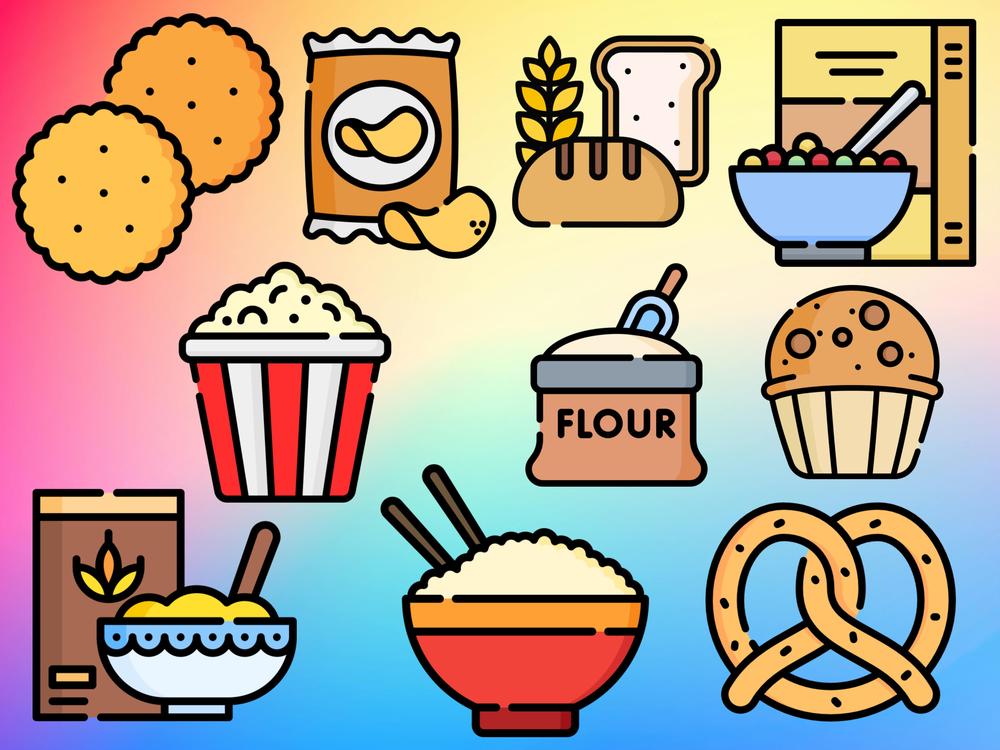
Note
The following is an excerpt from my post ‘Healthy’ Trap Foods, in which I made a detailed list of foods that I believe to deceptively unhealthy. I’ve broken that list down into easier to digest categories based on what food they are. Linked below are all the individual posts:
- Trap Foods - Breakfast
- Trap Foods - Drinks
- Trap Foods - Fruits & Veggies
- Trap Foods - Grains
- Trap Foods - Meals
- Trap Foods - Savory Sauces
- Trap Foods - Snacks
- Trap Foods - Sweet Spreads
Introduction
I wanted to put together a list of foods that people consider to be healthy, but are really just either a product of good marketing or misinformation. These foods are typically referred to “Trap Foods”, or “Fake Healthy Foods”, as they can lure customers into thinking they’re making better decisions, when in realty these “healthy” alternatives can be just as bad, if not worse.

TLDR (Too Long; Didn't Read)
- Extensively read ingredient labels
- Avoid ultra processed foods, especially ones containing refined sugar, refined grains, and vegetable/seed oils
- Don’t believe marketing claims
- Prioritize nutrient dense whole foods or minimally processed foods

Disclaimer
I’m not saying you should absolutely never eat any of these foods. Moderation is key, and the dose makes the poison. Most of the foods on this list are treats, and should be treated as such, but it’s healthy to enjoy treats every once in a while. Don’t eat them all the time, but don’t forbid yourself from having anything. Find a proper balance.
List of Foods
- Cereal
- Oatmeal
- Granola Bars
- Pretzels
- Crackers
- Chips
- Popcorn
- Rice Cakes
- White Rice
- Flour
- Bread
- Muffins
- Banana Bread
- Pancakes and Waffles
- Cornbread

Cereal
“Part of a complete breakfast” is what we were taught growing up. That children need cereal, and that breakfast is the most important meal of the day. That’s a hell of a successful marketing campaign. Cereal is probably one of the worst things you can eat in the morning; it’s essentially just a bowl of added sugar. Don’t worry guys, it’s fat free though (as if that’s really helping it’s case).
It doesn’t take a nutritionist to realize that Lucky Charms or Froot Loops are nothing more than a treat, but where the real “danger” lies is the cereals that are instead marketed as healthy. I’m talking about things like Honey Nut Cheerios, Raisin Bran, and any of the other “boring” adult cereals that aren’t “sugar bombs”. Except they are. For a 1 cup (36 g) serving of Honey Nut Cheerios, you’ll run yourself 12 g of added sugar and 140 calories, the exact same as in Lucky Charms. Oh and that “can help lower cholesterol” claim, only Original Cheerios actually have the American Heart Association certification on it. And let’s be honest, no one eats just 1 cup of cereal.
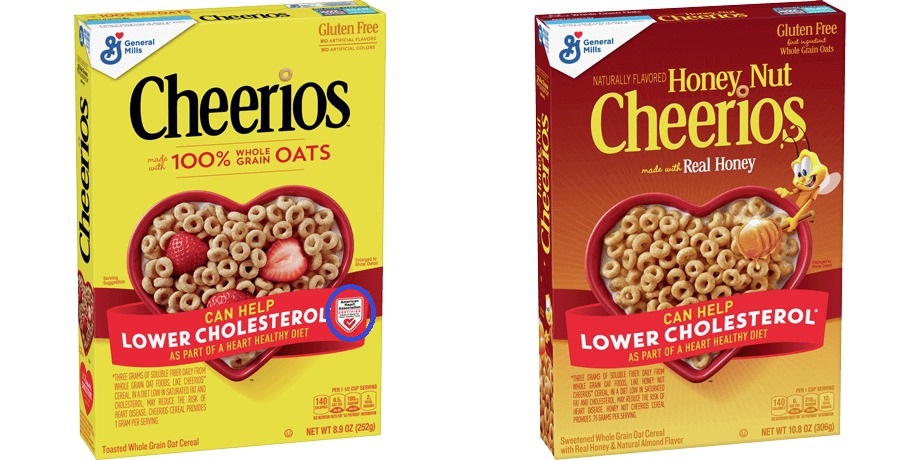
If you’re going to eat breakfast cereal, go with a sugar free option like plain cheerios or unsweetened puffed rice, and instead add flavors using fruit. Original Cheerios only have 1 g of added sugar per serving, and the serving size is larger (1.5 cups as opposed to 1 cup). Even then cereal still isn’t the healthiest breakfast; it’s still a bowl of empty refined carbs with no healthy fats or proteins, but at least this way it can actually be “part of a complete breakfast”. I’ve also had good success making my own cereal called Cinnamon Toast Chickpeas, which are crispy chickpeas tossed with cinnamon, served over a protein shake, and topped with berries and nuts. Now that’s a complete breakfast!
Don’t know why I just came out swinging with a vendetta against General Mills, the rest will be toned down. Probably because I’ve personally been duped by this in the past, and it’s a very common trap food. Look for cereals with no added sugars, whole grains, and high in fiber. Anything else is junk food with a good marketing team.
Oatmeal
Okay so you’ve gotten past cereal, but surley oatmeal is safe right? Think again. Oats can be a great addition to your diet: they’re a whole grain, high in fiber low fat, versatile, delicious, and gluten free. They also contain a fair bit of manganese and iron, and are rich in antioxidants. It even boasts about being “heart healthy” (so does cereal) on the box. So what’s the problem?
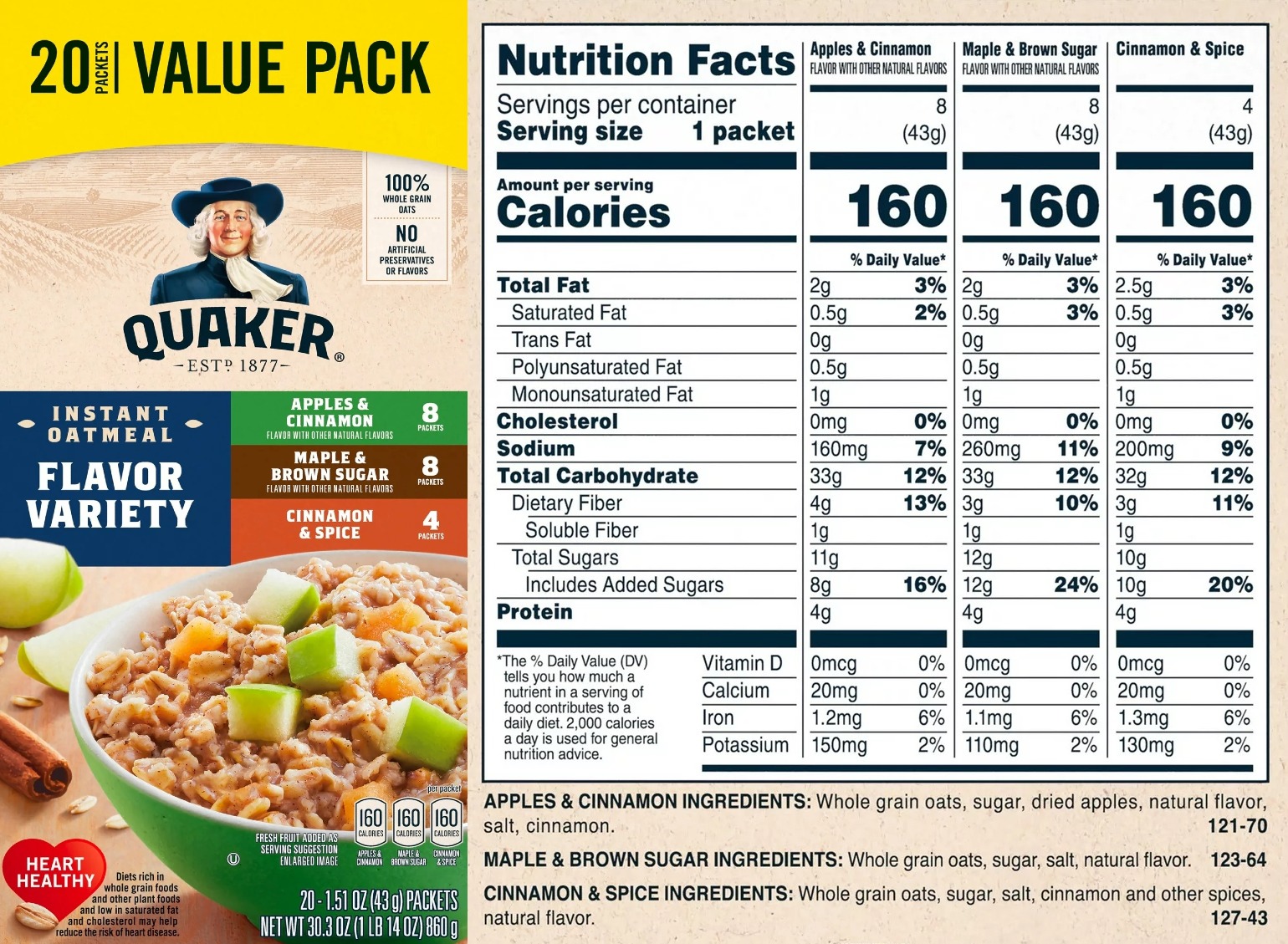
The main issue isn’t with oatmeal, but how it’s prepared. I’m mainly talking about flavored packets of oatmeal here, like ones in the image above. Unfortunately, these are really no different nutritionally from a bowl of sugary cereal; it’s just warm now. These packets are loaded with added sugars. When it comes to oatmeal for breakfast, make it yourself from plain oats, and sweeten it with fruit and a small amount of maple syrup or honey if desired. Also add some healthy fats like chopped nuts or nut butter, and some protein with yogurt or protein powder (or both!)
Below I’ll list a bunch of oatmeal recipes which are all low in added sugar, packed with protein and fiber, have a good dose of healthy fats, and can be eaten warm or cold:
- Overnight Oats with no Protein Powder
- Strawberry Chia Protein Oatmeal
- Yogurt Free Protein Oats
- Bigger Boi Oatmeal
- Banana Nut Bread Protein Overnight Oats
- Very Vic
- Peanut Butter Punch Protein Overnight Oats
- Berry Delicious Protein Overnight Oats
- Pumpkin Pie Protein Overnight Oats
- Reese’s Protein Overnight Oats
Granola Bars
Oatmeal flows us nicely into granola bars. Usually thought of as a healthy boring snack, these are actually much worse than they seem. Granola and granola bars are loaded with added sugars; just 1 Chewy Chocolate Chip Granola Bar has 7 g of added sugar in a 24 g serving. Do you know what else has the same amount of added sugar? 2 Chips Ahoy cookies. The vast majority of bars on the market contain sugar (or some type of sugar) as one of the first 3 ingredients on the label, making them a dessert.
Don’t think Nature Valley, Nutrigrain, Kind Bars, or Clif Bars are any better. I will say I used to be a huge fan of all 4 of these, and Clif Bars in particular serve a purpose. On a long hike or after a hard workout, the simple sugars in Clif Bars are actually exactly what your body needs to replenish energy, and the protein aids in recovery. Just don’t eat them as a day to day snack. If you want your own homemade granola or granola bars, you should check out my Low Sugar Granola and my Peanut Butter Banana Granola Bars, which only use a minimal amount of sweetener, and no refined fats or oils. Just nuts and oats!
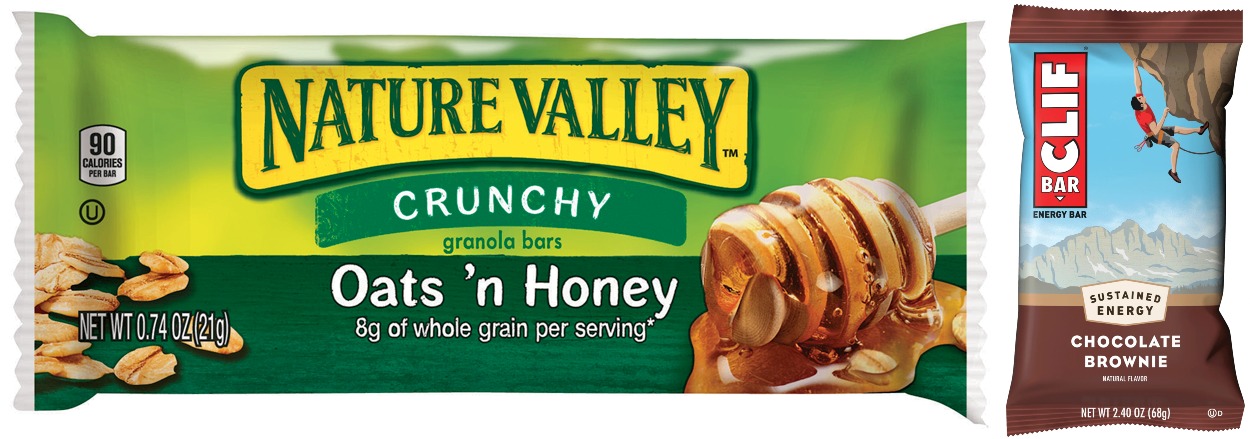
If you’re going to get a bar, I’d recommend either Larabar or RxBars (or my own Copycat Chocolate RX Bars); both are made with dates and nuts, and contain no added sugar or artificial sweeteners. RxBars even have some protein powder as well.
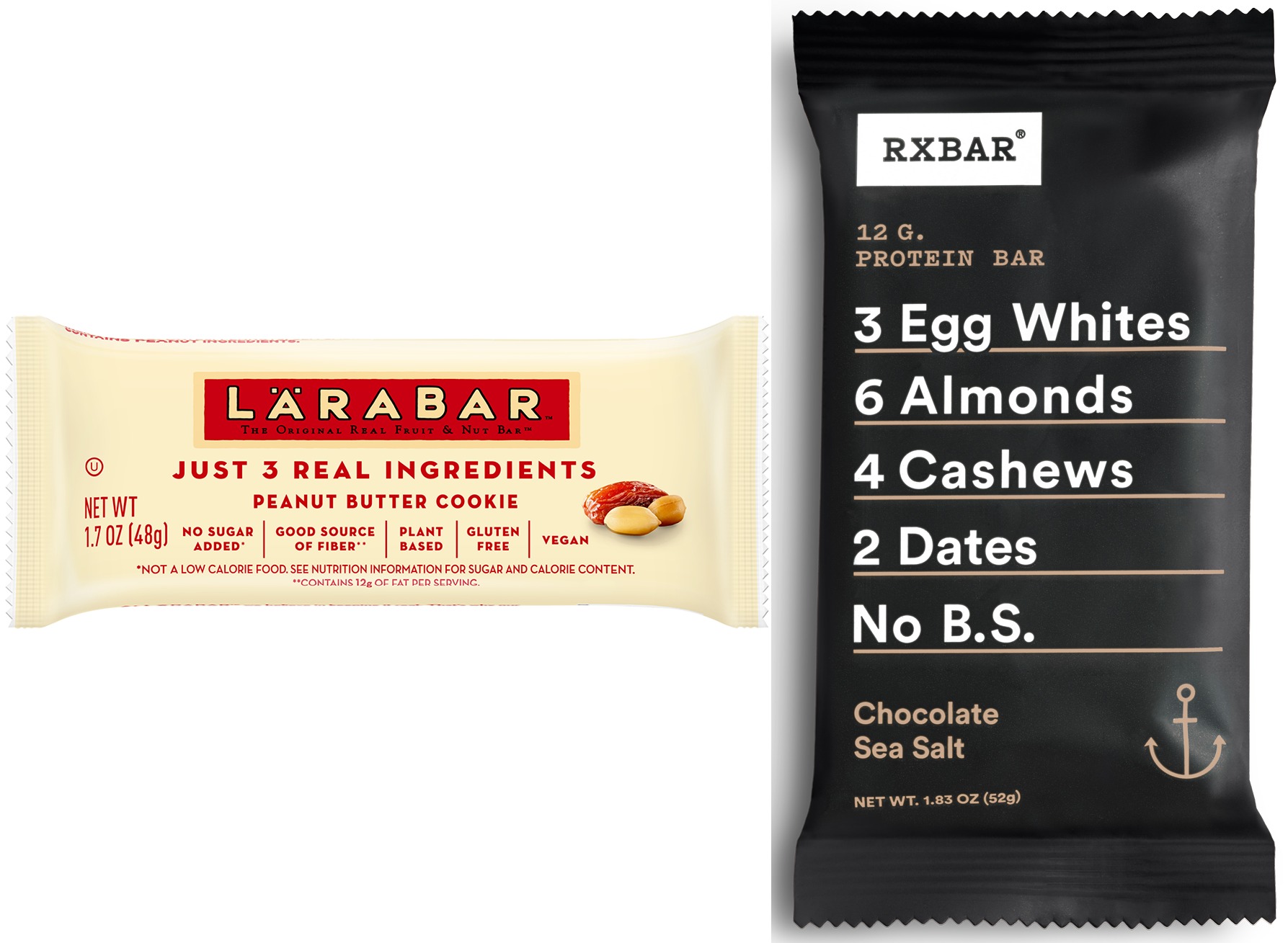
Pretzels
Let’s leave the world of dairy and move on to snack foods. First on the chopping block: pretzels. I’ll just come out and say it: I was the weird kid who liked getting pretzel on Halloween (everything is probably starting to add up now). I’ve always like fresh baked desserts, but I’ve never been a fan of packages cookies or candy; they’re just too sweet with no flavor.
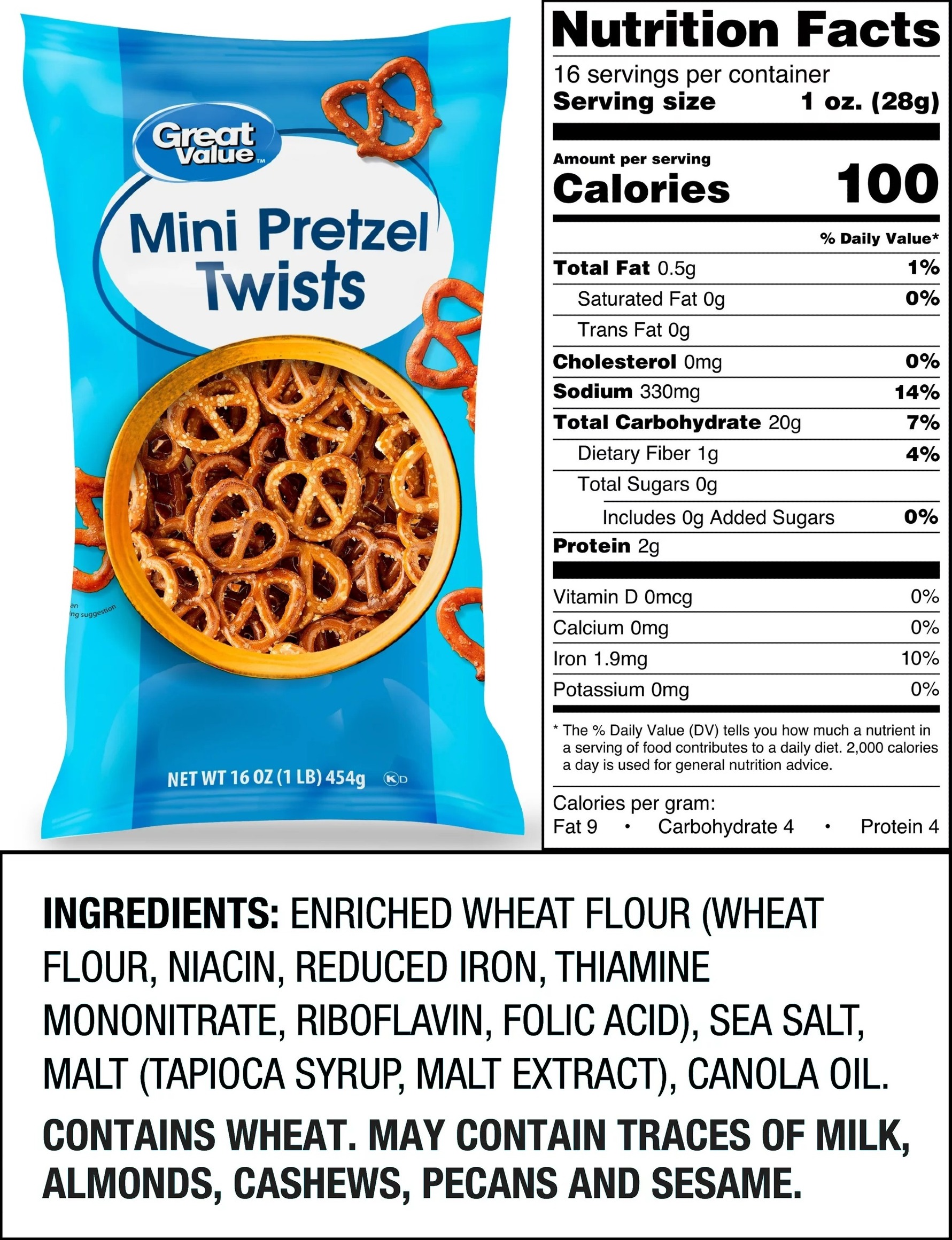
Backstory aside, let’s get back to pretzels. Pretzels are though of as a healthier snack for some reason; I’m guessing because they’re savory instead of sweet. So added sugar isn’t an issue for once; these Great Value Pretzels contain virtually none. The problem is that they’re not much more than an ultraprocessed white flour snack with a ton of salt. The enriched flour is stripped of all it’s fiber and micronutrients, leaving just starch and empty calories. At least they’re low in fat though, unlike crackers and chips. I’ll be honest, I still love pretzels to this day, but they’re still a treat I enjoy in moderation.
Crackers
Crackers we easily my go to snack growing up. Ritz, Graham Crackers, you name it. I even have a recipe for Gluten Free Crackers, that are basically mini healthy graham crackers. I used to have an obsession with Wheat Thins, where in college my friend shipped me 18 boxes for my birthday (thanks Sean, I would eat them every day when I woke up just before running).
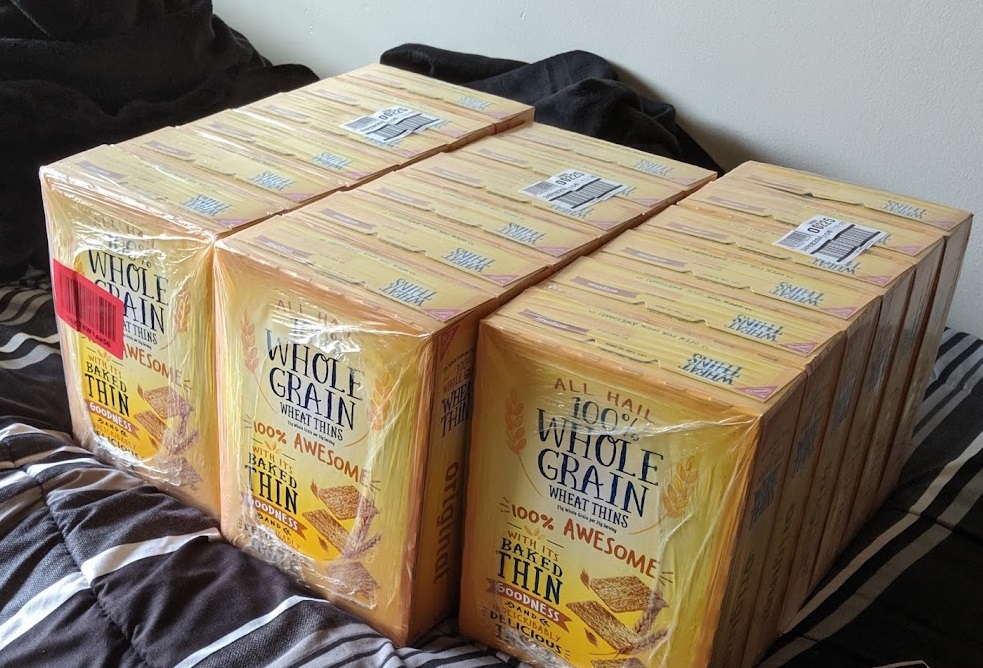
Crackers have the same issue as pretzels though. While being low in sugar, they can just be empty starch calories from refined white flour. Some crackers are also noticeably in both fat (think “butter” crackers like Ritz), or sugar (sweet graham crackers). A serving of Ritz is a measly 5 crackers, with 4.5 g of fat and 3 g of sugar. Graham crackers aren’t any better, where a serving (2 full cracker sheets) has 3.5 g of fat and 8 g of added sugar. My precious wheat things are actually high in both, where just a 16 cracker serving has 5 g of fat (from canola oil) and 5 g of sugar. These don’t sound terrible, but you and I will certainly be eating more than just 1 serving if we’re not paying attention.
Chips
I think everyone can agree that Lay’s Potato Chips or Doritos aren’t healthy. In fact, they’re probably the default junk food snack that people think of, up there with cookies and candy. There are lots of different types of chips though, with tortilla chips being the other main variety. Most would probably also agree that tortilla chips are junk food, so I’m not gonna spend any time here. Any type of chip is going to be relatively low in sugar, but very high in fat and salt.
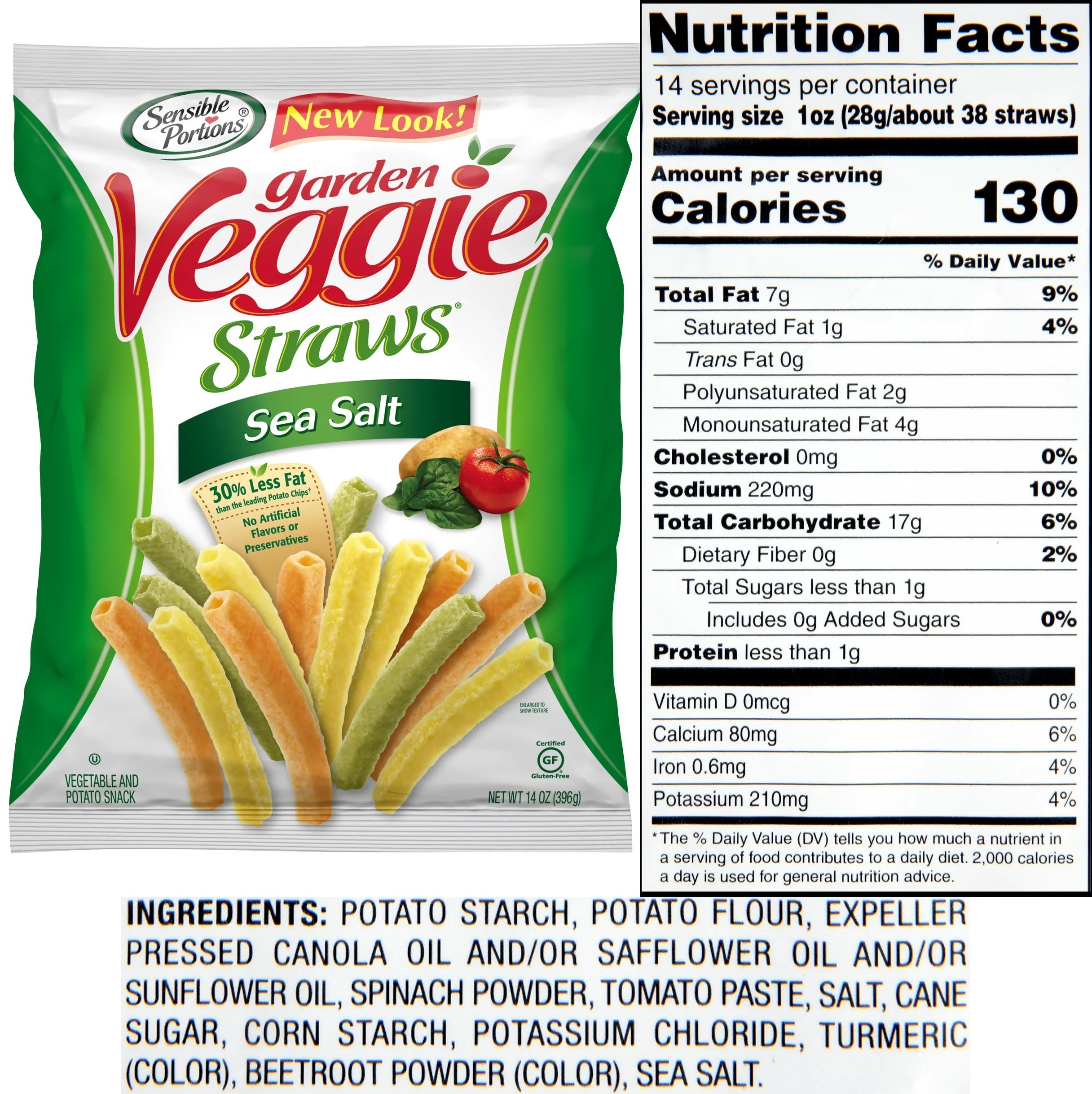
There are variations of chips that are marketed as being healthy though. These include veggie straws, plantain chips, and banana chips. Starting with Veggie Straws, these are just potato shapes in a different shape, with a tiny bit of dehydrated vegetable. They’re basically the potato chip version of Tri-Color Rotini Pasta; just a fun different color, no more, no less.
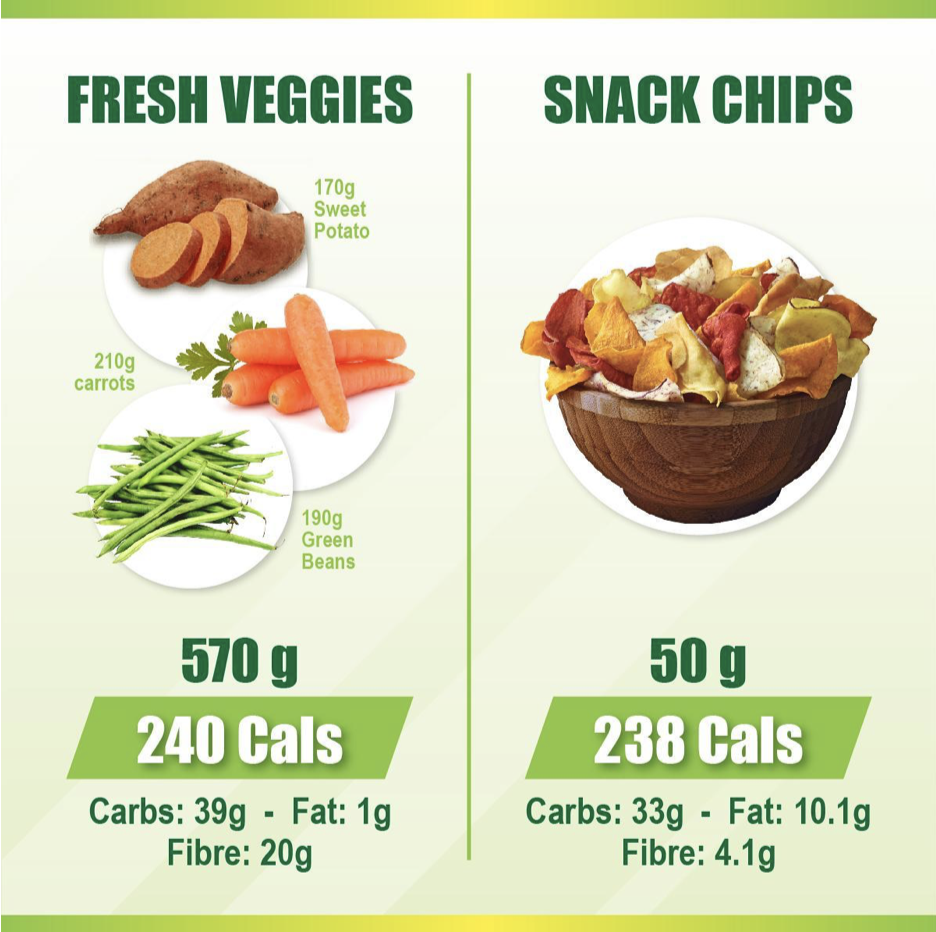
Next up is Plantain Chips. Instead of deepfrying potatoes to make potato chips, these are just deepfried plantains. It’s a starchy vegetable (good) fried in vegetable oil (bad). Both potatoes and plantains are healthy on their own, but can be turned into junk food when prepared like so. Now replace the plantians with bananas, add a little bit of sugar, and you end up with banana chips. These tend to use coconut oil at least, but that’s a mild improvement. If you can, make them yourself, or just eat the whole fruit/vegetable.
Popcorn
This one might actually be the opposite of the others on this list. Most people would associate popcorn with being junk food, eaten with a ton of butter alongside a candy at the movies. But popcorn can actually be a relatively healthy snack with a lot of volume if prepared correctly. Just 3 tbsp (40 g) of unpopped kernels turns into a whopping 7.5 cups when cooked. I’ve never been a personal fan of popcorn (it always gets stuck in my teeth), but I’ve heard that plain popcorn with some nutritional yeast or other spices can make for a very satisfying snack. Yes it’s essentially all carbs with a mediocre amount of fiber and protein, but a full serving actually looks like a lot of food since it’s mostly air. Just make sure to get plain popcorn kernels like the one linked above and shown below.
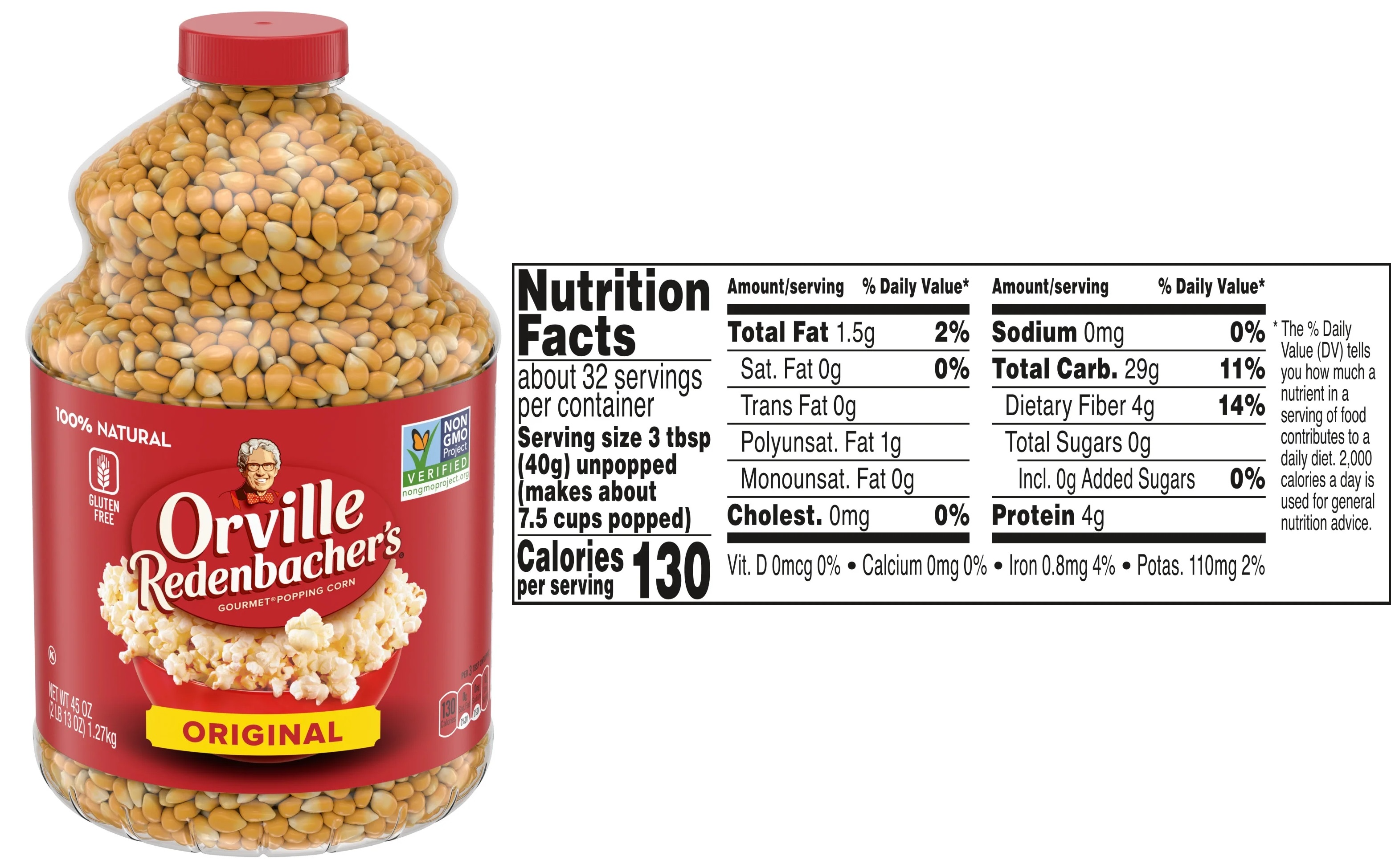
Just stay away from the microwaveable bags of popcorn. These have a lot of salt, fat (palm or vegetable oils), and preservatives. Additionally, the packaging for microwave popcorn contains PFAS, or forever chemicals, which are linked to many negative health outcomes including cancer and lung problems.
Rice Cakes
Rice cakes just scream 1990’s low fat craze to me. They’re basically all carbs and starch, but they’re super light and airy; 1 whole rice cake weighs just 9 g and contains only 35 calories and 7 g of carbs. They can be a great way to get some more carbs into your diet without going overboard like most snacks. I’ll be honest and say have some Lightly Salted Rice Cakes in my cabinet right now.
They’re super customizable; think anyway you’d enjoy toast, you can do as a rice cake. Rice cakes are a great base, and you can easily top with some healthy fats (nuts or avocado), protein (yogurt or cottage cheese), or fruit (berries, bananas, apples, etc.). Some sweet examples are:
- Natural Nut Butter with sliced banana
- Homemade jam (either Low Sugar Berry Jam or Strawberry Chia Jam) and nuts
- Cottage Cheese Peanut Butter with blueberries
- Roasted Hazelnut Nutella (SF) with sliced apples
- Strawberry Mint Protein Pistachio Butter with sliced strawberries
- Chocolate Banana Protein Peanut Butter with sugar free chocolate chips
- Cranberry Protein Almond Butter with raspberries
- Banana Bread Hummus Spread with toasted oats
- No Sugar Added Apple Spread with pumpkin seeds

You can make them savory too; sometimes I mix some plain nonfat greek yogurt or Holy Guacamole with some spices, and top with sliced tomatoes, cucumber, or any other fresh produce in my fridge at the time. Or you can just simply spread on some hummus. Here are my homemade hummus recipes:
- Classic Tahini Hummus
- Creamy Pesto Hummus
- Roasted Red Pepper Hummus
- Cheesy Garlic Hummus
- Golden Sweet Potato Hummus
- Mediterranean Roasted Eggplant Hummus
- Creamy Roasted Beet Hummus
- Lemony Taco Inspired Hummus
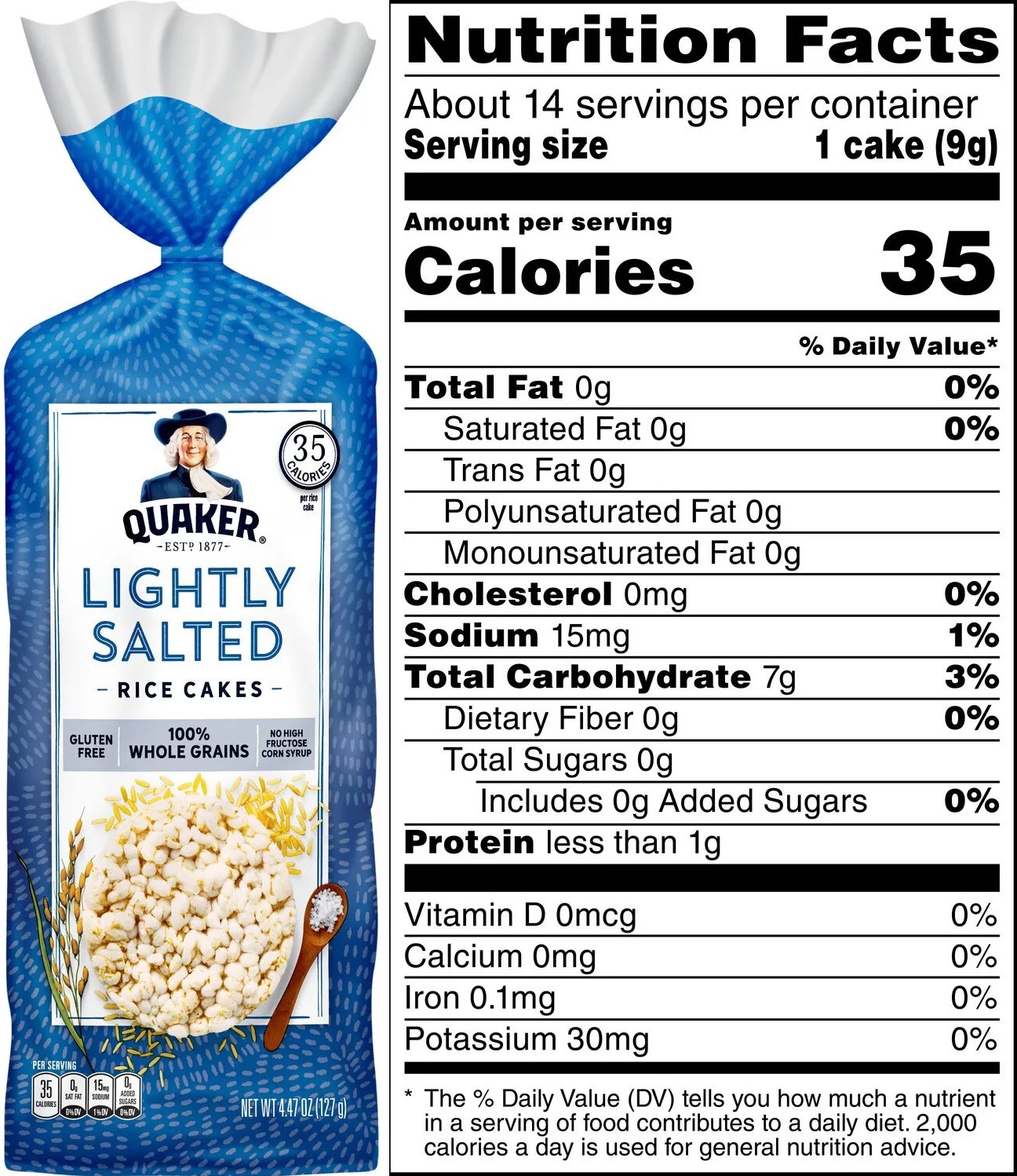
As with most things, make sure to get the plain variety. The lightly salted ones contain nothing but brown rice and salt, 2 healthy ingredients. The problem comes with the flavored rice cakes, like Caramel, Chocolate, or White Cheddar. Calories can double, sugar is added, and the ingredients list expands.
White Rice
White rice is fairly processed, removing the hull and bran and leaving just the starch. It’s basically the white flour equivalent for rice. With just the starch, white rice is lacking the fiber, vitamins, and minerals of brown rice, which is why it’s often enriched with micronutrients (the same is done with white bread). More starch and less fiber leads to greater insulin spikes, increasing your risk for diabeter and metabilic syndrome. Now I’m not saying that white rice is the most unhealthy thing in the world, far from it; I’m just simply saying there are better options. Instead of white rice, try instead using brown rice, wild rice, quinoa, couscous, or even riced cauliflower or broccoli.
I like have rice on the side with my meals, like with my Classic Rice and Beans or Simple Cauliflower Rice. Rice also works great mixed into dishes, such as Baked Rice and Beans with Vegetables or Lebanese Riced Cauliflower Casserole.
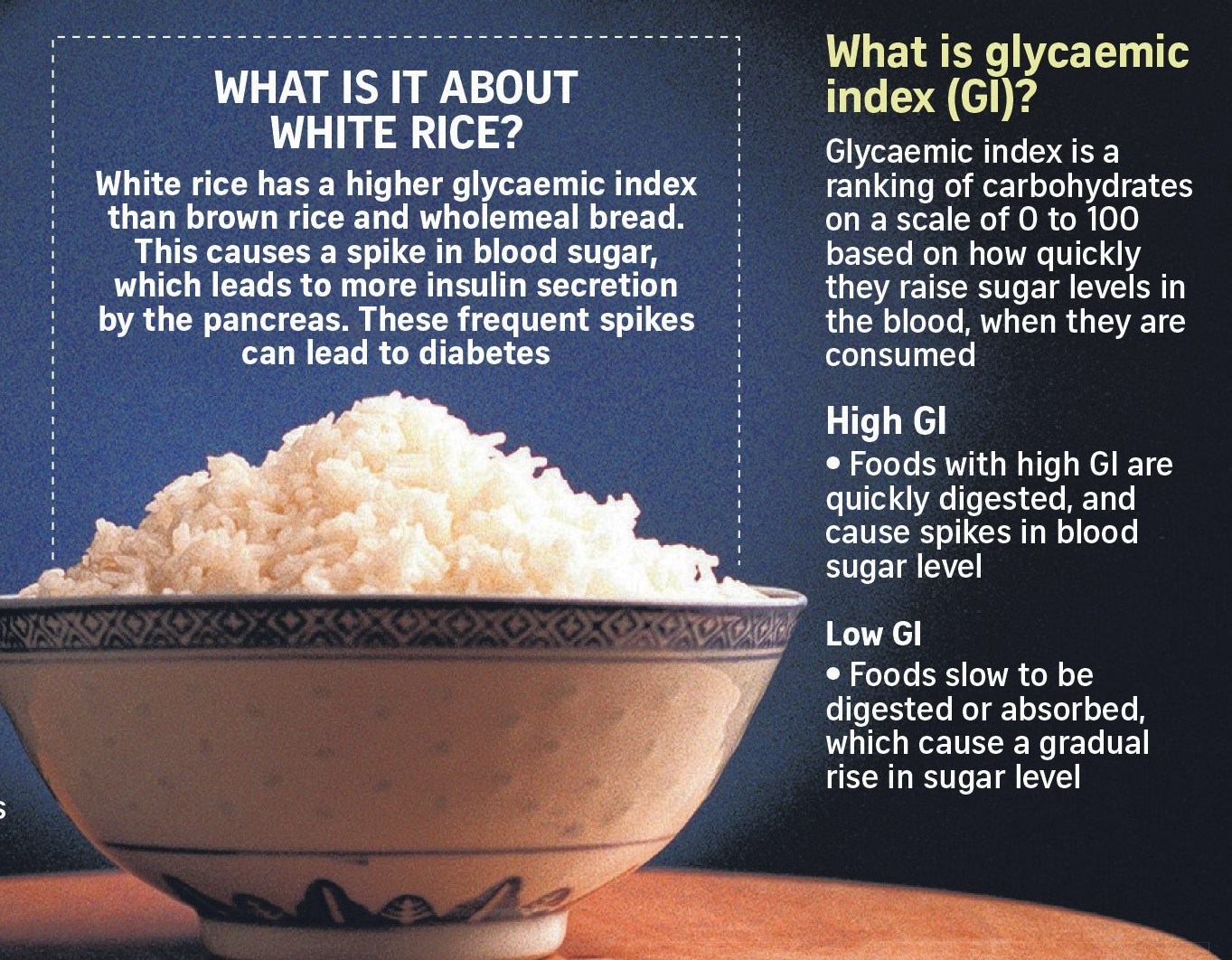
Flour
If you’ve noticed, all of my recipes stay away from white flour, also known as all purpose flour. Instead, I opt for whole wheat flour in recipes with gluten, and probably either oat flour or coconut flour in gluten free dishes. So why not all purpose flour? Below is a diagram showing the anatomy of a grain of wheat. Grinding togther the whole kernel (the bran, germ, and endosperm) will yield whole wheat flour, which is rich in nutrients like fiber, protein, calcium, iron, potassium, and some B vitamins (B1, B3, and B5). It also contains a small amount of fat, which in combination with the high fiber content of whole wheat flour leads to much lower spikes in blood sugar. Whole wheat flour can be used just like regular all purpose flour in baking, and leaves you with a great nutty flavor that adds a lot of depth to your baking.

But if you grind down just the endosperm, you end up with white flour. White flour is white due to both the white endosperm center and bleaching. All the nutrients are in the other parts (the bran and the germ), leaving just the starchy center with nothing but empty calories and a massive spike in your blood sugar. There’s a reason why most commercial white flours and white breads are “fortified” or “enriched”. White flour is entirely stripped of its nutrients, so manufacturers have to “add” them back in. Not only is white flour much more processed and refined than whole wheat, being devoid of any flavor, but its minerals aren’t as bioavable as compared to the ones naturally occuring in whole wheat flour. Whenever feasible, it is best to avoid using and consuming products with refined white flour, and instead opt for more whole grain options.
Bread
As discussed, white flour is generally a poor nutrition choice; it would then follow that white bread would also not be your healthiest option. Though whole wheat bread isn’t that much better of an option if we’re still talking about commercially processed bread products. Most store bought loaves of bread are high in our old friend, added sugar (a lot of whole wheat breads actually contain more sugar than their white bread counterparts), as well as vegetable oils and preservatives. Look at that giant list of ingredients below! There’s a reason why grocery store bread can last for weeks without going bad, whereas real bread from a bakery goes stale in just a day or two (tip: store extra fresh baked bread in the freezer, it’ll last forever in there). Traditionally, bread is just flour, water, yeast, and salt; one of man’s oldest and simplest creations.

Bread is a soft spot for me; baking bread is what first got me into cooking during COVID (no I’ve never made sourdough; apparently I missed that memo). The process of creating a loaf of whole wheat bread from scratch is my favorite thing to do in the kitchen, leading me to enjoy the delicious resulting loaf more than the cake like loaves bread you typically see on store shelves. There’s a reason my most Europeans describe American bread as being way too sweet, and why Ireland declared Subway “bread” to instead be cake due to its high sugar content. White bread is essentially entirely made up of glucose, leading to the largest blood sugar spike of any food you could consume. Even whole wheat bread is a high GI food, but it is significantly lower than white bread. Below is a chart of different foods and their respective GI values.
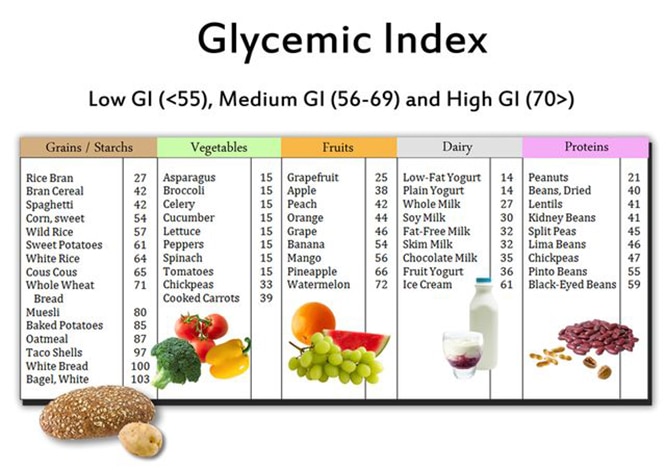
If you’d like to get into breadmaking, I have plenty of whole wheat flour recipes. I’ve linked some of them below.
- 100% Whole Wheat Bread
- Oat-Wheat Tortillas
- Home Oven Baked Pizza
- Whole Wheat Hot Pretzels
- Whole Wheat Pita Bread
- Whole Wheat Sweet Potato Loaf
- Whole Wheat and Oat Flour Irish Soda Bread
- No Yeast Whole Wheat Burger Buns
For anyone with Celiac disease, I also have a few gluten free bread recipes for you to enjoy. I’ve used flour alternatives such as coconut flour and oat flour, but I’ve come across other GF bread recipes with almond flour, ground flaxseed, psyllium husks, or millet flour.
- High Protein Flatbread Wrap
- Gluten Free Oat Wraps
- Gluten and Grain Free Coconut Bread
- Low Carb Cloud Bread
- Gluten Free Savory Pretzels
- Cheesy Protein Cornbread
Muffins
Muffins are unfrosted cupcakes that somehow get a pass as a breakfast food. These Blueberry Muffins have 350 calories per muffin with 21 g of added sugar and 17 g of fat. They’re filled with a ton of ingredients, and contain almost as much sugar as flour. I used to make muffins decently often (banana chocolate chip specifically). Just take a look: 1/2 cup of vegetable oil and 3/4 cup of sugar, as well as 1.5 cups of white flour, for just a dozen muffins. If that sounds like a lot, that’s because it is. Most “breakfast” options are just a meal of dessert. Which is fine in moderation if you know what you’re getting yourself into. A muffin can be a fine dessert on occasion, but is a terrible start to your day. Sorry, but a Triple Chocolate Muffin is just a brownie.
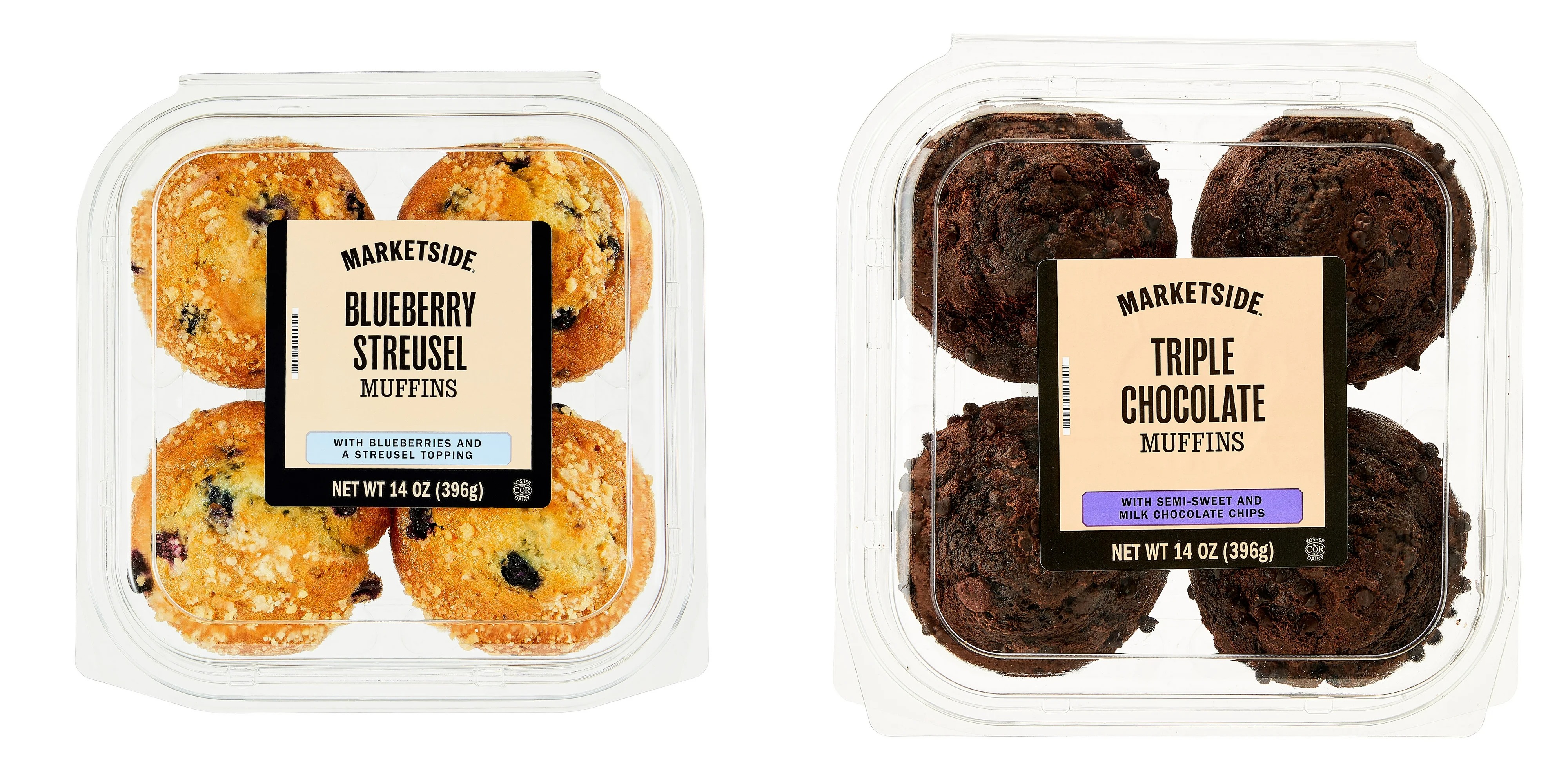
As for healthier homemade versions, you should check out my Sweet Potato Banana Muffins, Oatmeal Banana Mini Muffins, or my Peanut Butter & Jelly Muffins.
Banana Bread
So take muffins, mash some bananas into it, and bake it in a loaf pan. What you end up with is banana bread. A delicious cake, no doubt, but not a breakfast, bread, or a healthy snack. Just because it has bananas or nuts doesn’t make it healthy; it’s still a dessert. At least this one below is honest and refers to itself as a cake.
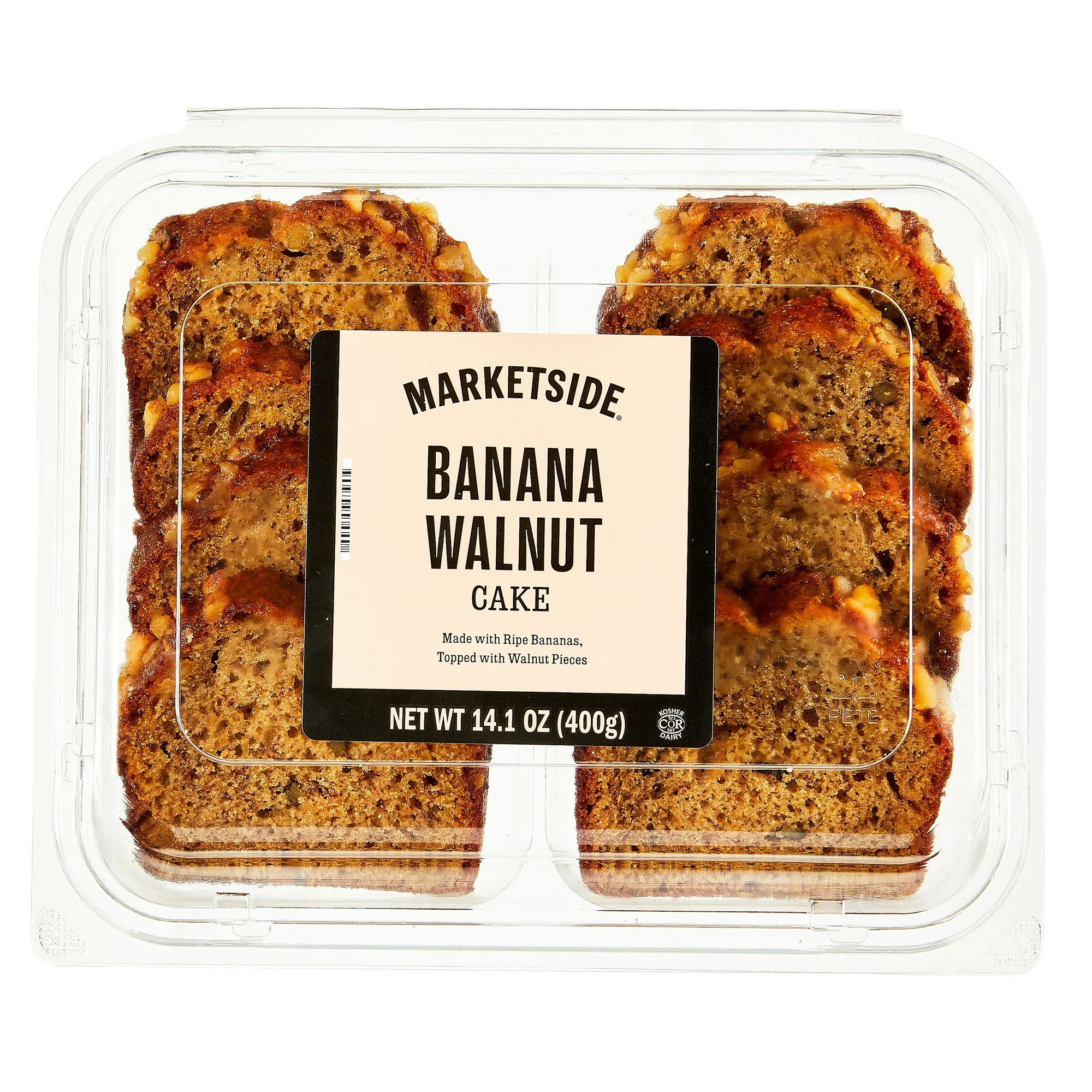
As for healthier homemade versions, you should check out my Protein Banana Nut Bread or my Double Chocolate Banana Bread.
Pancakes and Waffles
Last on the chopping block for breakfast foods are pancakes and waffles. Take your banana bread recipe, and cook it instead on a frying pan for pancakes or a waffle maker for waffles. Just the same dessert in a different shape again, being filled with sugar and refined flour, leading to massive spikes and crashes in your blood sugar, energy, and mood.
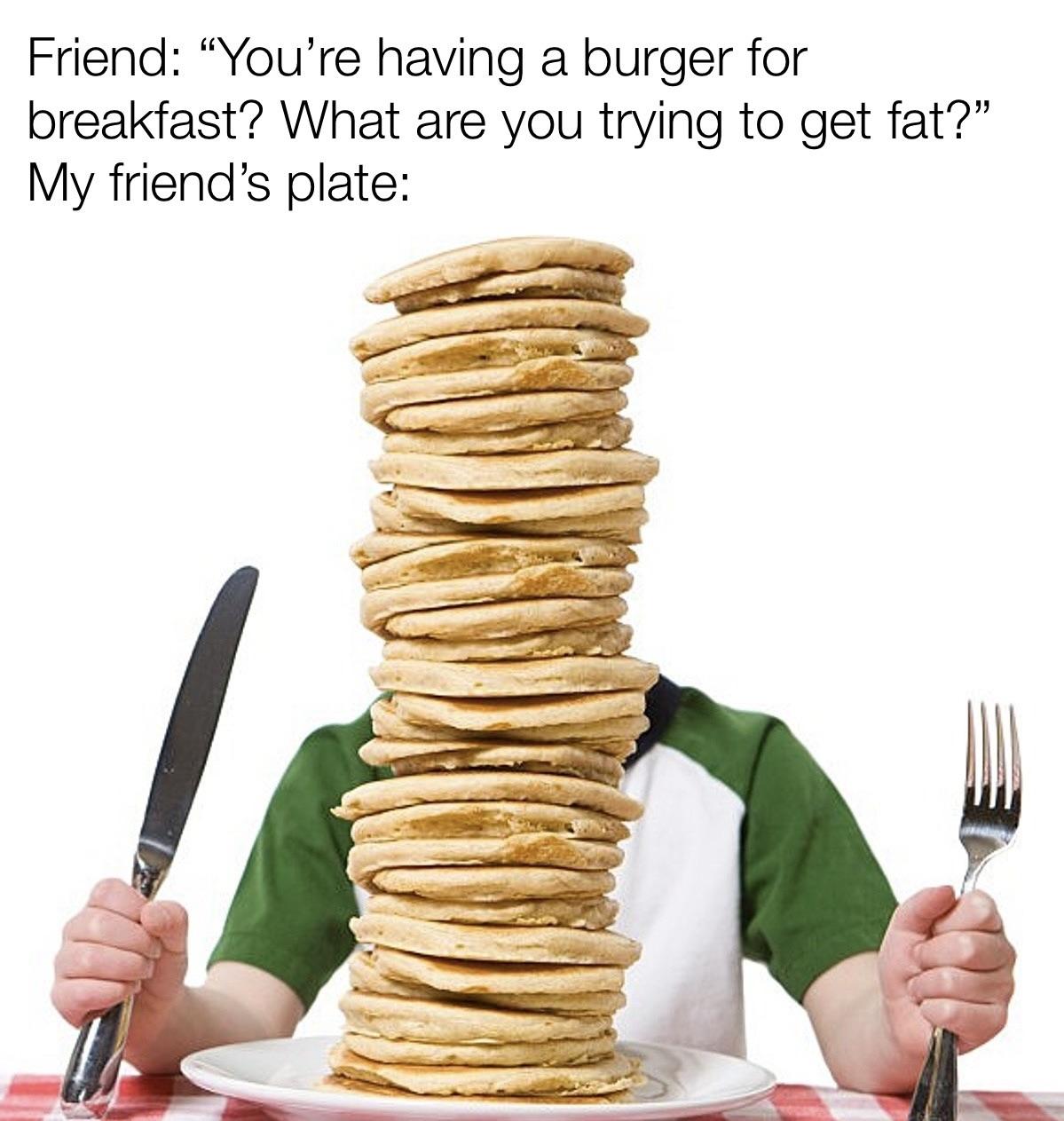
I’ll be honest, I absolutely loved waffles growing up. I’d make myself chocolate chip banana waffles once a week in high school by following a boxed mix, mashed in a banana, and fold in chocolate chips. They’re delicious, but again not something to start your day off with. Instead, consider a pancake (or waffle) recipe made of protein and whole grains, like my Pumpkin Protein Pancakes.
Cornbread
…cornbread. Cornbread is another dessert that somehow weaseled it’s way onto your dinner plate. Just like muffins, banana bread, and baked beans, cornbread is secretly a dessert with good marketing. The one linked above (and shown below) has sugar as it’s first ingredient, closely followed by bleached white flour and seed oil (wait, where’s the cornmeal?). There’s more added sugar, fat, and calories in 1 slice of this cornbread as one of these large chocolate chip cookies!
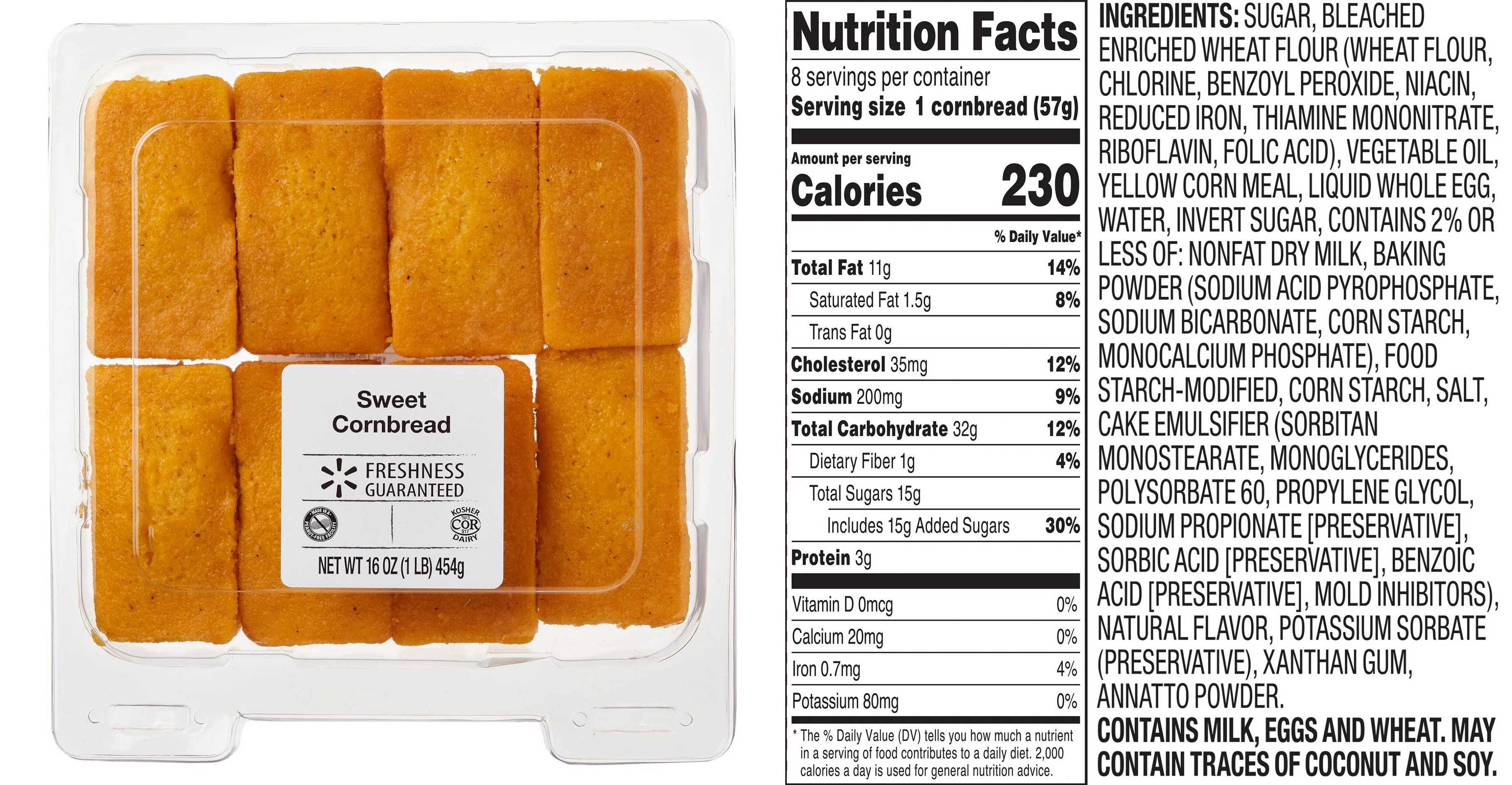
Cornbread or corn muffins can be a fine dessert in moderation, but know what you’re getting when you reach for a slice. If you’re anything like me (if you’re this deep down then congrats, you probably are lol), you should enjoy my Cheesy Protein Cornbread, which is much higher in protein, lower in fat and carbs, and free of any added sugars or artificial sweeteners.
Sources
- 10 ‘Healthy’ Foods That Are Worse Than You Think
- Yogurt to salad dressing: Top 10 trap foods and how to avoid them
- What foods are commonly mistaken as healthy?
- 68 ‘Healthy’ Foods That Are Terrible for You
- Fake Healthy Foods: 6 Foods We Think are Healthy
- 9 Health Benefits of Eating Oats and Oatmeal
- 8 Health Benefits of Nuts
- Added Sugars
- The truth about juice
- What does caffeine do to your body?
- Every Starbucks Coffee Drink - Ranked by Sugar Content
- 5 Ways That Drinking Milk Can Improve Your Health
- Does microwave popcorn cause cancer?
- Here are 17 Snacks You Never Knew Were Vegan
- Is White Rice Healthy or Bad for You?
- 5 of the Healthiest Florus for Every Purpose
- Whole Wheat vs. White Flour
- Irish Supreme Court Rules That Subway Bread Has Too Much Sugar to Count as Actual Bread
- 7 Proven Health Benefits of Dark Chocolate
- Dark chocolate health benefits? The good and the bad to this sweet treat
- What are flavanols?
- 8 ‘Healthy’ Sugars and Sweeteners That May Be Harmful
- Habitual Fructose Intake Relates to Insulin Sensitivity and Fatty Liver Index in Recent-Onset Type 2 Diabetes Patients and Individuals without Diabetes
- Coconut Sugar: A Healthy Sugar Alternative or a Big, Fat Lie?
- 6 Reasons Why High-Fructose Corn Syrup Is Bad for You
- Low Dose of Sucralose Alter Gut Microbiome in Mice
- What Are Sugar Alcohols, and Are They a Healthy Sugar Swap?
- Everything You Need to Know About Stevia
- Monk Fruit Sweeteners: Good or Bad?
- Is Allulose a Healthy Sweetener?
- Sucralose (Splenda): Good or Bad?
- 12 Low-Fat Snacks That Are Actually Unhealthy
- 10 ‘Low Fat’ Foods That Are Low In Nutrients
- Seed Oils: Are They Actually Toxic?
- Are Vegetable and Seed Oils Bad for Your Health?
- Margarine or Butter: The Heart-Healthiest Spreads
- Trans fat is double trouble for heart health
- Are Cold Cuts Healthy? Here’s What a Dietitian Has to Say
- Processed meat and cancer: What you need to know
- Sodium Levels of Processed Meat in Australia: Supermarket Survey Data from 2010 to 2017
- The 18 Best Protein Sources for Vegans and Vegetarians
- 7 Health and Nutrition Benefits of Potatoes
- 6 Surprising Health Benefits of Sweet Potatoes